Introduction
Why Were Ferrets Domesticated: The domestication of animals has played a pivotal role in shaping human history, enabling us to harness the natural world’s resources for our benefit. While some animals were domesticated for their utility in agriculture, transportation, or as sources of food, others found their place in our homes for companionship and unique abilities. Among the latter category, one fascinating case is that of the ferret. Ferrets, diminutive carnivores belonging to the Mustelidae family, have an intricate history of domestication that dates back over two thousand years. Their journey from wild predators to charming, inquisitive pets is a testament to the enduring and dynamic relationship between humans and animals.
The roots of ferrets nails domestication, we must first look to their natural behavior and characteristics. Ferrets are adept hunters, and their slender, elongated bodies, sharp teeth, and inquisitive nature make them natural-born predators. Historically, ferrets were employed by humans for hunting purposes, particularly in the control of vermin such as rats and rabbits. Their ability to navigate tight spaces and ferret out hidden prey made them indispensable allies in the battle against agricultural pests. The exact time and place of ferret domestication remain shrouded in the mists of history, but evidence suggests that they were likely domesticated by ancient Egyptians and Greeks.
Over time, ferrets’ roles expanded beyond mere pest control. They became valued for their endearing personalities and affectionate interactions with humans, leading to their integration into households as pets. One cannot overlook the charm of these sleek, playful creatures. Their mischievous antics, insatiable curiosity, and, yes, their propensity for stealing shiny objects have endeared them to countless individuals around the world. The bond between ferrets and humans is forged through shared experiences and mutual affection, illustrating how domestication is not solely driven by utilitarian purposes but also by the deep emotional connections that can develop between different species.
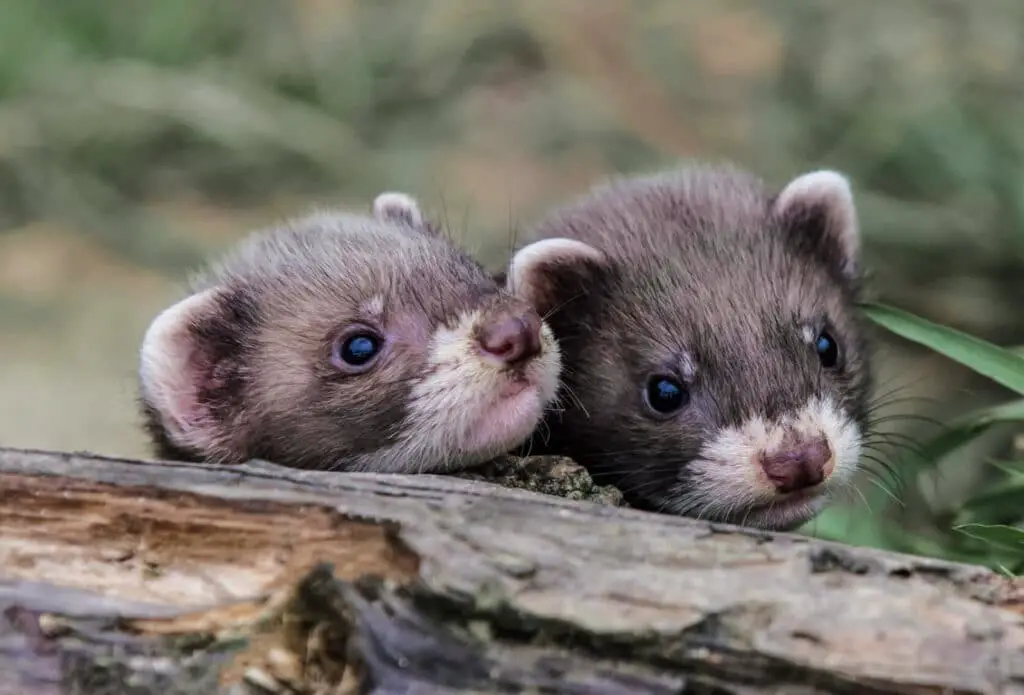
For what purpose are tamed ferrets used?
Although designated as “exotic” animals, ferrets have been domesticated for thousands of years, used by humans as working animals for such roles as rabbit hunting and pest control. However, keeping of ferrets as companion animals is a fairly modern concept.
Hunting Companions: One of the oldest and most traditional uses of ferrets is in hunting. Ferrets have an innate ability to locate and flush out burrowing animals like rabbits and rats from their underground lairs. In this role, they work closely with human hunters, often accompanied by trained hawks or other birds of prey, to help catch game. This practice, known as “ferreting,” dates back centuries and is still prevalent in some regions, although it has declined in popularity with the advent of modern hunting methods.
Pest Control: Ferrets are highly skilled at pursuing and catching rodents, making them excellent natural pest controllers. In rural and agricultural settings, ferrets are employed to keep the population of rats and other pests in check. Their small size and agility allow them to access tight spaces where these pests often hide, making them particularly effective in barns, grain stores, and other areas prone to infestations.
Research and Conservation: Ferrets, especially the endangered black-footed ferret species, have been subjects of scientific research and conservation efforts. These studies aim to better understand their behavior, genetics, and habitat needs, with the ultimate goal of preserving and reintroducing them into the wild.
Entertainment and Companionship: Many people keep ferrets as pets due to their playful and affectionate nature. Ferrets can be delightful and entertaining animal companions, and their curious personalities make them endearing additions to households. They are known for their ability to bond with their human caregivers, creating strong emotional connections.
Can domesticated ferrets survive in the wild?
There are no naturally wild domesticated ferrets. If a pet ferret escapes, it rarely survives more than a few days, according to the American Ferret Association. However, there is a wild species called the black-footed ferret (Mustela nigripes).
Dependence on Human Care: Domesticated ferrets rely entirely on humans for their survival. They have been bred for docility, tameness, and dependency on human caregivers for food, shelter, and protection. Unlike wild ferrets, they lack the instincts and skills needed to hunt for food, build shelters, and defend themselves against predators.
Physical Characteristics: Domesticated ferrets have undergone selective breeding for specific traits such as coat color, size, and temperament. These changes have often resulted in physical characteristics that would hinder their survival in the wild. For instance, some domestic ferrets have been bred to have long, fluffy coats that would be impractical in a natural environment.
Loss of Wild Instincts: Through generations of domestication, ferrets have lost many of the natural instincts and behaviors necessary for life in the wild. They no longer possess the acute hunting skills, agility, or survival instincts of their wild counterparts.
Vulnerability to Predators: Domesticated ferrets are ill-equipped to defend themselves against predators that are common in the wild. In their domesticated state, they lack the natural defenses, such as sharp claws and teeth, to fend off larger animals or escape from danger.
What kind of ferrets are domesticated?
The domestic ferret is the domestic version of the European polecat. Research has shown that ferrets were bred in captivity and kept as companion animals for many years. They were also used for rodent control and rabbit hunting. Ferrets were first depicted in Egyptian artwork dating back to 1400-1200 BCE.
The most common type of domesticated ferret is the standard ferret. These ferrets typically have a sleek, elongated body, short legs, and a tapered tail. They are known for their playful and curious nature, making them popular as pets. Standard ferrets come in a variety of coat colors, including sable, albino, silver, and cinnamon, among others.
Angora ferrets are a subset of domesticated ferrets known for their long, silky fur. Their coat can grow several inches in length, giving them a distinct appearance compared to standard ferrets. Angora ferrets are bred for their luxurious fur, and their care requires regular grooming to prevent matting.
Albino ferrets are a specific color variation of domesticated ferrets. They have a pure white coat, pink eyes, and a pink nose. Albinism in ferrets is the result of a genetic mutation that leads to a lack of pigmentation in the fur, skin, and eyes.
Blaze ferrets have a distinct white stripe or “blaze” running down their face. This feature sets them apart from other ferrets, giving them a unique appearance. Blaze ferrets can come in various coat colors and patterns, but the distinguishing feature is the white stripe on their face.
Are ferrets loyal pets?
A pet ferret can be one of the most loyal, cuddly, and loving pets available but could also be one of the most finicky. With a shorter lifespan of just 8 to 10 years, it is recommended that ferrets be spayed or neutered to prevent major health risks that would shorten their lives even more.
Affectionate Nature: Ferrets are naturally affectionate animals. They enjoy physical contact, including cuddling, playing, and grooming with their human companions. This affectionate behavior is a clear sign of their attachment to their owners.
Social Creatures: Ferrets are highly social animals. In the wild, they live in groups, and this social nature extends to their interactions with humans. They thrive on companionship and are known to seek out interaction and playtime with their owners, demonstrating their attachment.
Recognition of Their Owners: Ferrets can quickly recognize and bond with their human caregivers. They often respond to their owners’ voices, scents, and movements, indicating a level of recognition and connection.
Playfulness: Ferrets are known for their playful and curious nature. They often engage in interactive games with their owners, and this playfulness fosters a sense of closeness and loyalty. Owners often describe their ferrets as “playful buddies.”
Why do farmers have ferrets?
Most of the estimated 500,000 ferrets in the UK are used for vermin control. Four rabbits eat about as much grass (not to mention young wheat, barley and sugar beet) as a sheep, so unsurprisingly, farmers are keen to keep the rabbit population down. And increasingly they rely on ferrets to help them do this.
Pest Control: Ferrets are skilled hunters, particularly when it comes to pursuing and catching small burrowing animals like rats, rabbits, and ground-dwelling pests. On farms, these pests can cause significant damage to crops, livestock feed, and stored grains. Ferrets excel in reducing the populations of such pests, making them valuable assets in pest control efforts. By deploying ferrets to hunt down these rodents, farmers can help protect their crops and livestock from infestations and damage.
Rabbit Control: In areas where rabbits are a prevalent agricultural pest, ferrets are especially valuable. Rabbit populations can multiply rapidly and consume large amounts of vegetation, causing extensive damage to crops and grazing lands. Ferrets’ ability to enter rabbit burrows and flush them out makes them effective in controlling rabbit populations.
Natural Predator: Ferrets, as natural predators, help maintain a balanced ecosystem on the farm. By controlling the populations of pests and rodents, they contribute to the overall health of the environment, reducing the need for chemical pesticides and other pest control methods that can have detrimental effects on the ecosystem.
Efficiency: Ferrets are often more efficient at hunting and capturing small prey than other methods or tools. Their agility, speed, and ability to access tight spaces give them an advantage in dealing with burrowing pests, making them a cost-effective solution for farmers.
Do ferrets love humans?
Ferrets may be tiny, but they pack big personalities into small packages. These guys can be extremely loving and cuddly with their humans. Of course, it takes time to form that special friendship.
Affectionate Behavior: Ferrets are naturally playful and affectionate creatures. They often exhibit behaviors that are indicative of their love and attachment to humans, such as nuzzling, licking, and cuddling. These actions are their way of showing affection and seeking interaction.
Seeking Attention: Ferrets are known to actively seek out the company of their human caregivers. They often follow their owners around the house, wanting to be involved in their daily activities. This desire for attention and companionship is a clear sign of their affection.
Playful Interaction: Ferrets engage in playful interaction with their human companions, whether through games of chase, hide-and-seek, or simply running around and exploring together. These activities are not only fun for ferrets but also serve as a means of bonding.
Recognition: Ferrets can quickly recognize and respond to their owners’ voices, scents, and appearances. They often show excitement and eagerness when their owners return home, which suggests a strong emotional connection.
What is the importance of ferrets?
The ferrets themselves are a food source for larger predators like owls, coyote and badgers. They are members of the ecosystem both as predators and prey on the prairie.
Ferrets have a long history of being used as natural pest controllers. Their hunting skills and agility make them valuable in controlling populations of rats, rabbits, and other small rodents that can cause significant damage to crops and stored grains. By keeping pest populations in check, ferrets contribute to agricultural productivity and reduce the need for chemical pesticides.
In their natural habitat, ferrets play a crucial role in maintaining the balance of ecosystems. They are predators of various small mammals and help control the populations of these species. This, in turn, can have cascading effects on the entire ecosystem, preventing overgrazing and habitat degradation caused by excessive herbivore populations.
Ferrets are used in scientific research for a variety of purposes, including studies related to physiology, neuroscience, immunology, and infectious diseases. Their similarities to humans in terms of respiratory and digestive systems make them valuable subjects for research, especially in areas like vaccine development and drug testing.
Some ferret species, such as the black-footed ferret, are critically endangered. Conservation efforts to save these species often involve captive breeding programs where domestic ferrets have been used as surrogates to raise and rear young ferrets of endangered species. This has been instrumental in saving species from extinction.
Are ferrets harmless?
Ferret owners should be aware that although ferrets can make good pets, they can sometimes carry germs that can make people sick. Ferrets are also not recommended for homes with children under 5 years of age because of the increased risk of injury from bites.
Ferrets are naturally playful and curious animals. They are not aggressive by nature, and their primary instinct is to explore their environment, interact with their surroundings, and engage in social play with other ferrets and humans. This behavior is not harmful in itself and is characteristic of their species.
Ferrets are social creatures and often thrive on human interaction and companionship. When provided with proper socialization and training, they tend to be affectionate and gentle pets. However, neglect or mistreatment can lead to behavioral issues.
Ferrets have a reputation for being mischievous and playful. They enjoy games like hide-and-seek, chase, and wrestling. While their playfulness can sometimes involve nipping or biting, it is usually done in a non-aggressive manner, more as a form of play and communication.
Proper training and socialization are crucial for ensuring that ferrets are well-behaved and safe. Teaching them appropriate behaviors and boundaries can prevent unwanted nipping or aggressive tendencies. Responsible pet ownership includes training ferrets not to bite or exhibit aggressive behaviors.
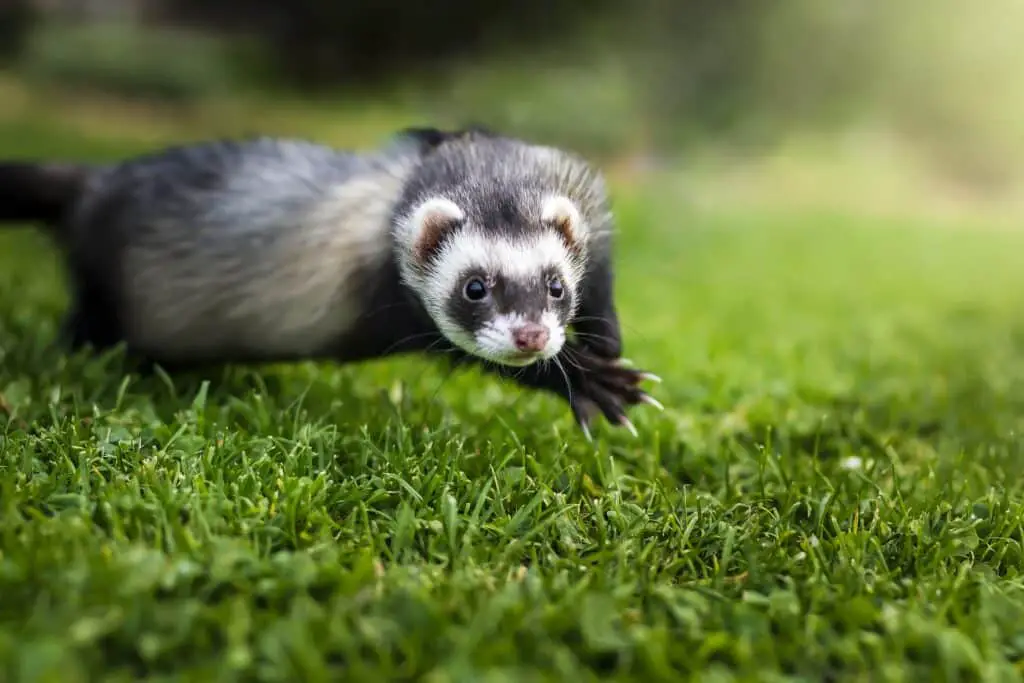
Conclusion
These fascinating creatures, originally harnessed for their exceptional hunting skills, have transcended their utilitarian roles to become cherished members of households worldwide. The reasons behind the domestication of ferrets are multifaceted, reflecting the interplay of practicality, companionship, and emotional connection. Historically, ferrets were prized for their prowess in pest control, particularly in the eradication of rats and rabbits, which threatened crops and food stores. Their unique ability to navigate burrows and tight spaces made them indispensable allies in this battle against agricultural pests. Ancient civilizations, such as the Egyptians and Greeks, recognized and harnessed these skills, marking the early stages of ferret domestication.
Their playful and inquisitive natures, coupled with their endearing personalities, began to captivate human hearts. The bond between ferrets domestic and their human companions deepened, leading to their integration into households as beloved pets. Their charming antics, such as stealing shiny objects and every nook and cranny, have endeared them to countless individuals, further cementing their place in our lives. The domestication of ferrets also highlights the broader theme of how animals can transition from utility-based relationships to emotional ones.
While their hunting skills initially led to their domestication, it was the mutual affection, trust, and shared experiences between humans and ferrets that solidified their position as pets. This transition showcases the remarkable adaptability of both species in forging connections that go beyond the practical. In the modern world, ferrets continue to thrive as pets, providing companionship and joy to countless households. Their presence is a testament to the enduring bond between humans and animals, demonstrating the power of empathy and understanding in shaping the course of domestication.

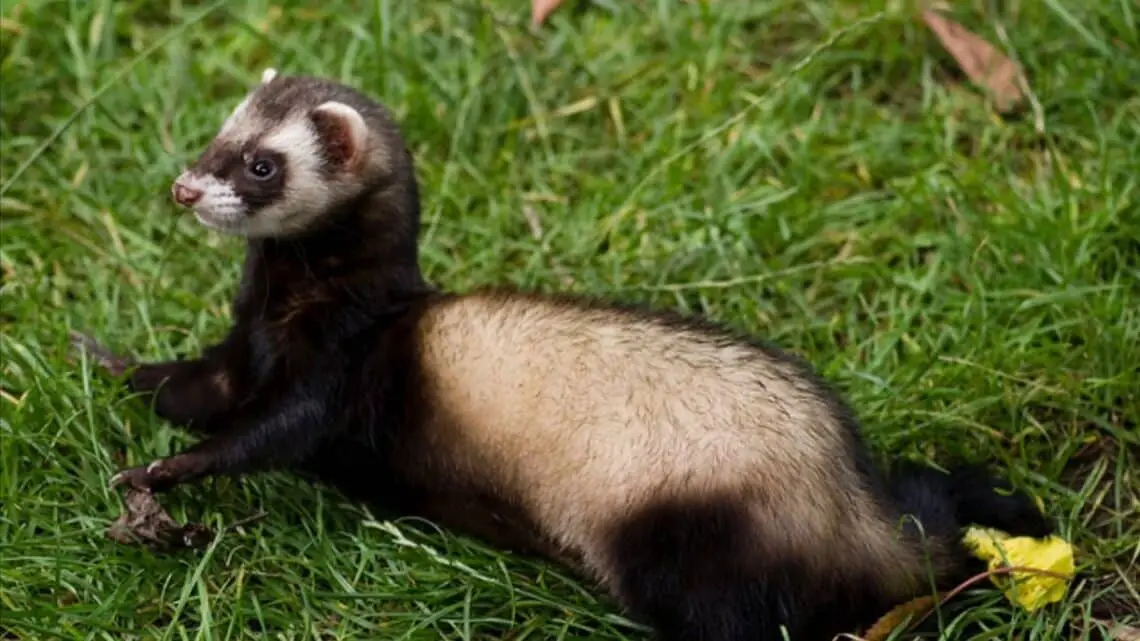
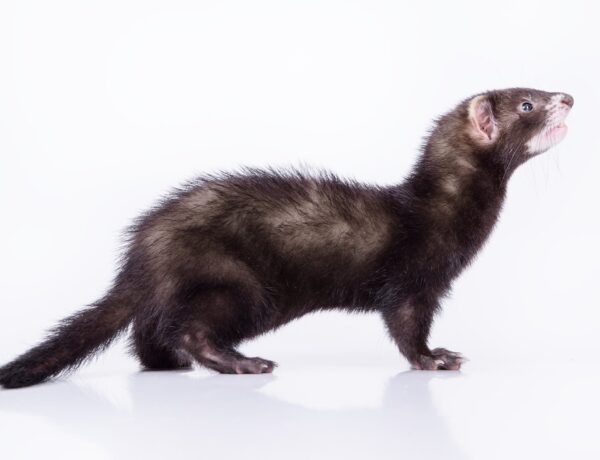
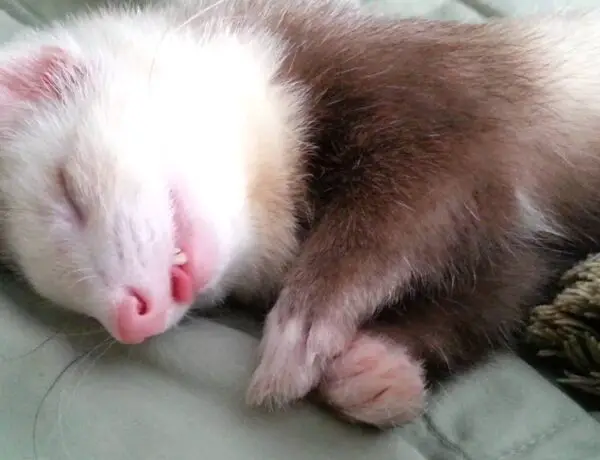
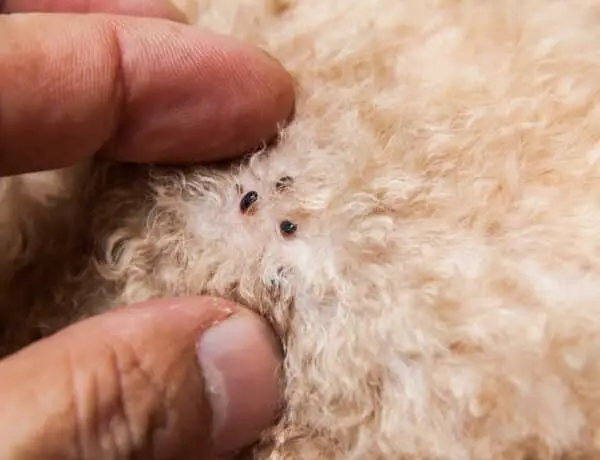
No Comments